Go beyond the scoreboard
Get the latest on L.A.'s teams in the daily Sports Report newsletter.
You may occasionally receive promotional content from the Los Angeles Times.
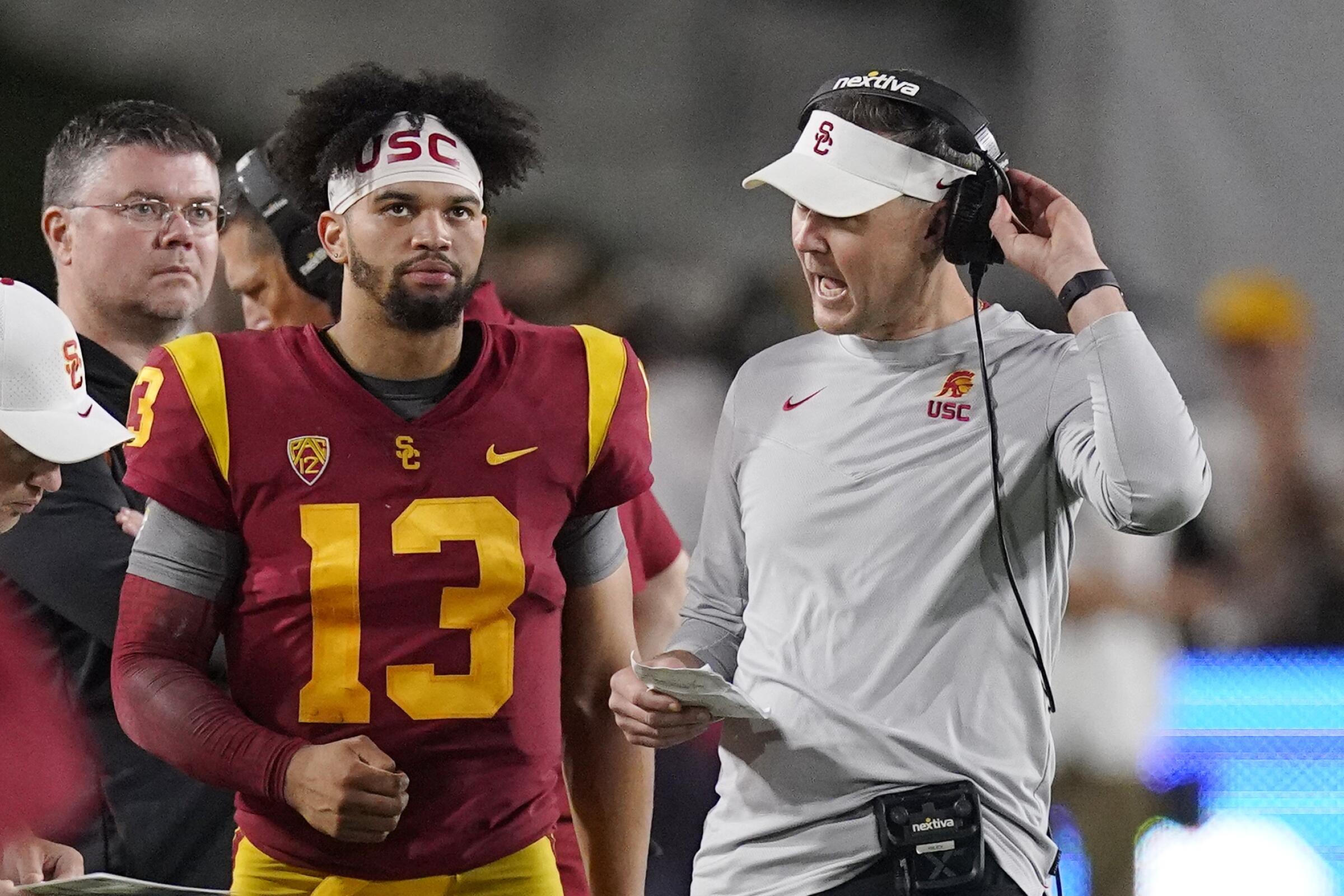
Every aspect of Lincoln Riley’s football program, every plan, every decision, every note from every season he’s spent as a head coach is accessible from an iPad that he has at the ready.
At Oklahoma, any given season’s notes might take up between 150 and 200 pages on Riley’s iPad. His first campaign as USC’s coach required, well … a few more.
“Year 1 here,” Riley said this week, “I had over 600.”
Riley spent some time poring through those notes since USC’s Cotton Bowl loss, assessing from every angle how far the team had come in his first year. It was the first chance he’d had to do much reflecting, Riley said, and it became clear in that process how much he might’ve missed with all the macro changes being made.
Charles White, the USC tailback who won the Heisman Trophy in 1979 and national championship in 1978, died of cancer Wednesday. He was 64.
Sitting down with reporters this past week, Riley was blunt while assessing where the program stood when he arrived. The roster was worse, in spots, than expected. Certain aspects of the program, such as nutrition, were lagging way behind. There was no means for quantifying accountability with players. All those systems needed to be put in place.
“When you take over something new that also requires a complete overhaul, it’s amazing how much there is to do in the first year,” Riley said. “You’re so into every little part of it, I think maybe you lose — or not lose, it may be difficult to find some of that overall perspective. Every little thing has to be changed and answered for.”
The changes that were made helped spur a stunning turnaround as USC went from 4-8 to winning 11 games in Riley’s first season. But at times, Riley explained, the season felt like “a race you can’t ever get ahead in.”
Year 2 shouldn’t require so much catching up. The processes are already in place. The same staff, including embattled defensive coordinator Alex Grinch, remains intact. And as Riley sees it, the talent level of the roster should improve “dramatically,” whether by virtue of a more robust recruiting class or the 11 transfers who have already signed on.
“Now,” he said, “there’s proof of concept.”
The next steps in that plan came into clearer focus this week. Here’s what we know heading into an offseason Riley says will be “one of the more critical times for the program.”

It wasn’t lost on anyone, Riley least of all, how much USC relied, game in and game out, on Tuli Tuipulotu getting to the quarterback.
“The reality was if he didn’t get there, our chances weren’t super high,” Riley admitted.
Tuipulotu, who led the nation in sacks with 13.5, is off to the NFL, leaving the cupboard even more bare up front for USC. But Riley and his staff have already made some major headway in restocking the position.
USC added a former five-star edge defender from Texas A&M in Anthony Lucas and a productive defensive end in Jack Sullivan, who broke out last season at Purdue. Arizona transfer Kyon Barrs was “one of the more explosive interior defensive linemen in the league,” according to Riley, and should offer a boost where USC desperately needed one. Oklahoma State inside linebacker Mason Cobb was an All-Big 12 selection last season and almost certainly will be a starter, while Riley has raved about the playmaking ability of Georgia State edge rusher Jamil Muhammad.
A more robust class of freshmen should help with depth as well. Six of USC’s 19 signees in the 2023 recruiting class are along the defensive front. More could still be on the way.
“That front will probably turn over more than any position on our football team this year,” Riley said.
USC’s Reggie Bush, whose 2005 Heisman Trophy was later vacated because of NCAA violations, is part of the 2023 College Football Hall of Fame class.
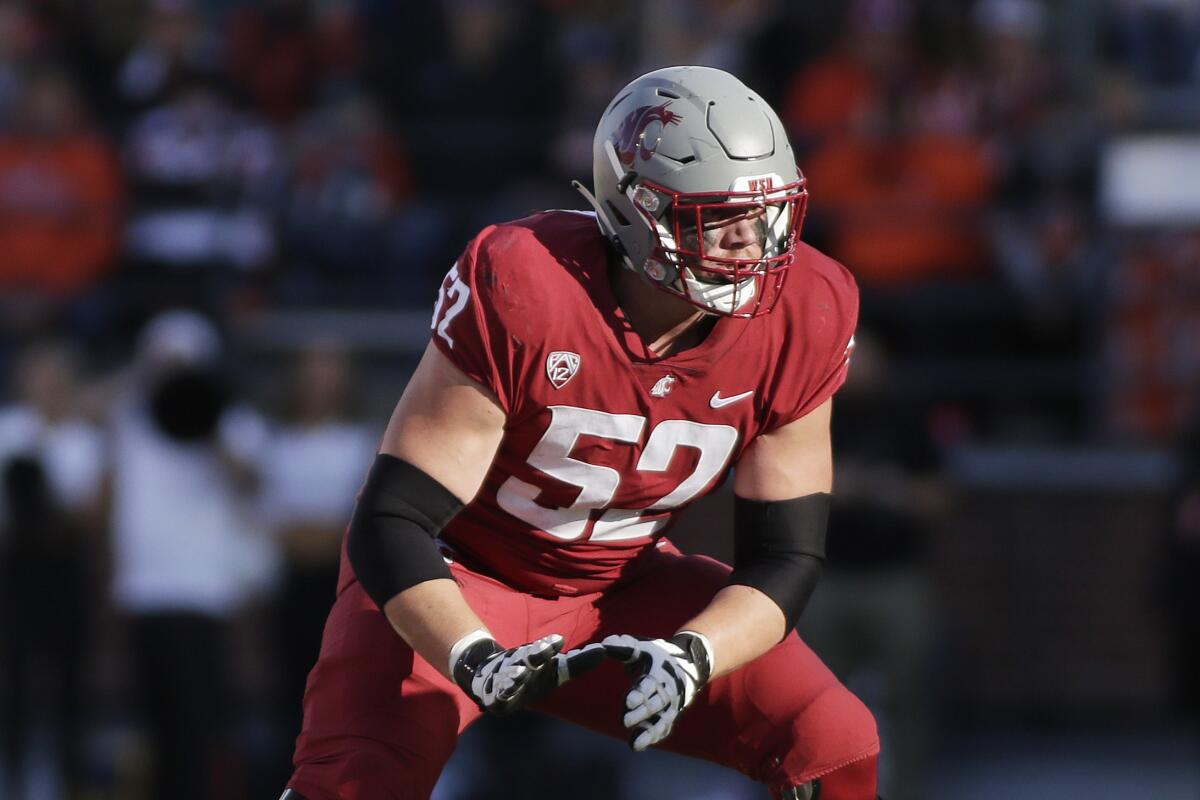
The only position that might rival that rebuild is the offensive line, where USC must replace three of its five starters from last season.
But what might’ve seemed like a major concern a few weeks ago feels much less urgent now after a few quick trips to the transfer portal.
Washington State offensive tackle Jarrett Kingston emerged as one of the better pass protectors in the Pac-12 last season. Over 399 snaps, according to Pro Football Focus, he didn’t give up a sack and gave up just three hurries. He’s now a Trojan and could step in immediately to replace Bobby Haskins.
Florida transfer tackle Michael Tarquin is likely to fit in first at right tackle, given that’s where he started last season. But he’ll be challenged by Courtland Ford and Mason Murphy, both of whom have starting experience.
With Jonah Monheim set to move inside to guard and Justin Dedich settling in at center, the only looming question might be at left guard, where junior Gino Quinones got the start during the bowl game.
Georgia looks to remain college football’s team to beat in 2023, but other schools, including Michigan and Alabama, will challenge the Bulldogs.
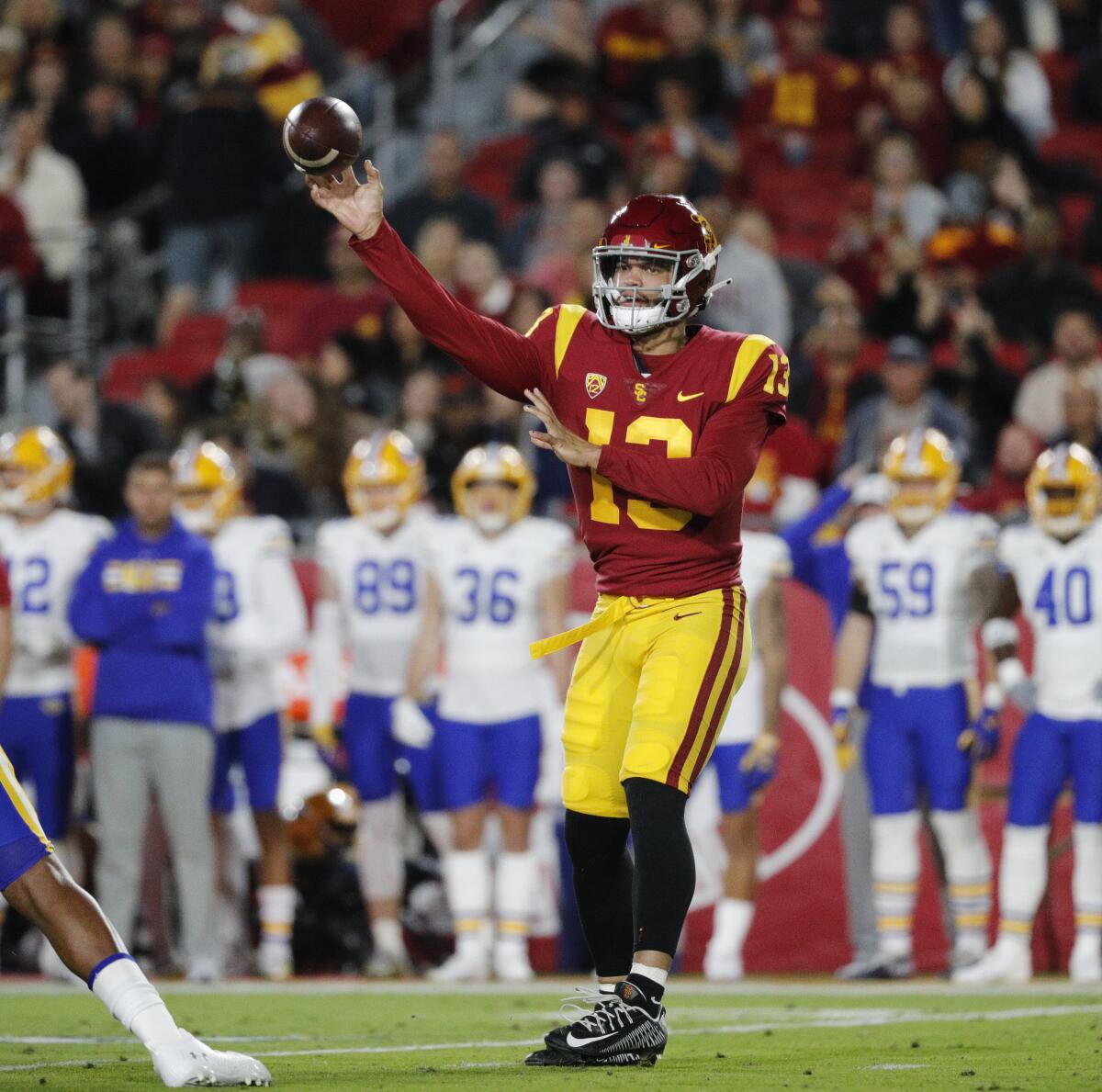
Riley has now coached three different Heisman Trophy winners, plus another Heisman finalist, but he’s never worked with any of those quarterbacks after they’d won the prestigious award.
He’ll get that chance with Caleb Williams, whose heroic showing as a sophomore this season begged questions of how his ceiling as a quarterback could possibly be any higher.
“There’s still a lot of things that the kid can get better at,” Riley insisted.
The spotlight will burn much brighter next season. Only once has there been a repeat Heisman winner, but the expectations for Williams will be that high. He’ll be the favorite to be the No. 1 overall pick in the 2024 draft, too, meaning NFL scouts are sure to spend the season picking him apart. It’ll be a different sort of test for USC’s budding star quarterback.
“There’s certainly things, fundamentally. There’s things mentally that he can do better. There’s things, situationally, he can do better,” Riley said. “That position, it’s such a constant climb. And so yeah, I mean, excited about the progress, but also, there’s gotta be more.”
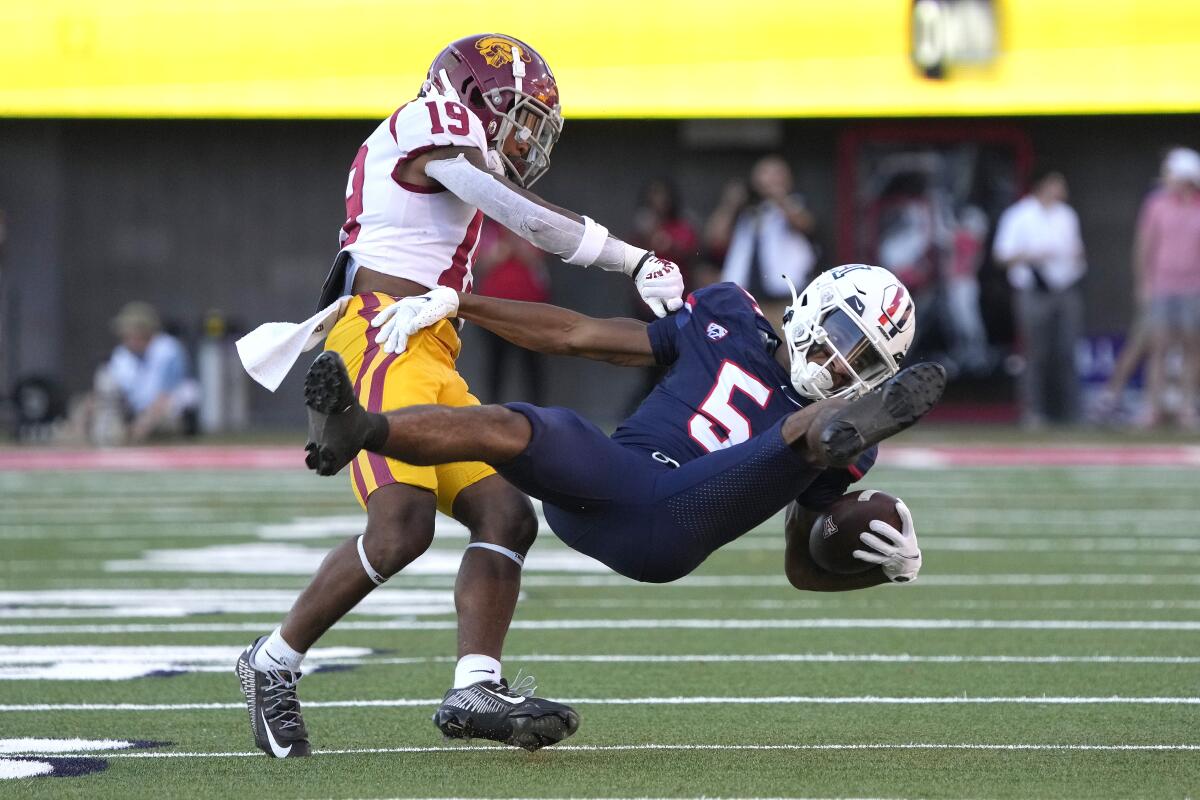
Kyle Ford was the sixth overall receiver recruit in the 2019 class. Gary Bryant Jr. was the seventh-rated wideout a year later. And C.J. Williams was the 10th best at the position two years after that.
All three have now left USC via the transfer portal. And yet, given the logjam they have at the position, could the Trojans be more talented at receiver next season?
Replacing a likely first-round pick like Jordan Addison won’t be easy, but Arizona transfer Dorian Singer was among the best receivers in the Pac-12 last season. He absolutely torched the Trojans in Tucson in October and should step up as a top target.
Incoming five-star freshman Zachariah Branch seems poised to make an immediate impact, and Makai Lemon, a top-50 recruit, could be close behind.
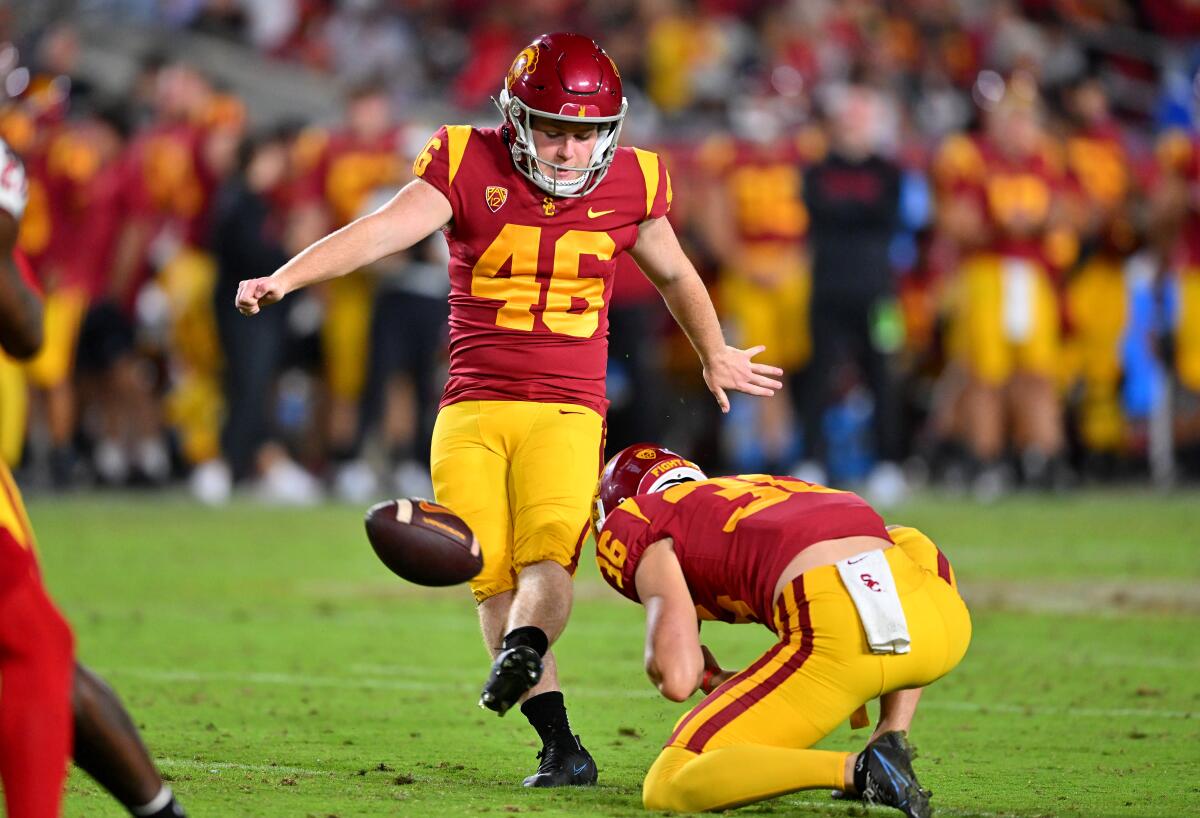
Riley has never spent one of his full-time staff spots on a special teams coordinator, nor has he offered any indication that he might change his mind on the matter. But the coach admitted that USC’s special teams needed to improve in several areas.
That much was clear after Mario Williams muffed a kickoff return in the Cotton Bowl near the goal line, initiating an epic USC meltdown. Riley called the fumble “a monumental error” and labeled USC’s kickoff return efforts as “pretty disappointing on the year.”
He wasn’t pleased with how few touchbacks USC produced — at 43%, USC ranked 84th in the nation — or with USC’s punting, which he said “wasn’t quite as consistent as we would expect them to be.” The Trojans proceeded to mine the transfer portal for a punter and kickoff specialist, Arizona State’s Edward Czaplicki to push Aadyn Sleep-Dalton and Alex Stadthaus.
Riley did express confidence in freshman kicker Denis Lynch, who connected on just 68.2% of his field goals in his first season.
“He missed a few that we would expect him to make,” Riley said, “but he probably made a few that were pretty, you know, that were pretty gutsy, big-time kicks for a young guy in that scenario.”
Go beyond the scoreboard
Get the latest on L.A.'s teams in the daily Sports Report newsletter.
You may occasionally receive promotional content from the Los Angeles Times.